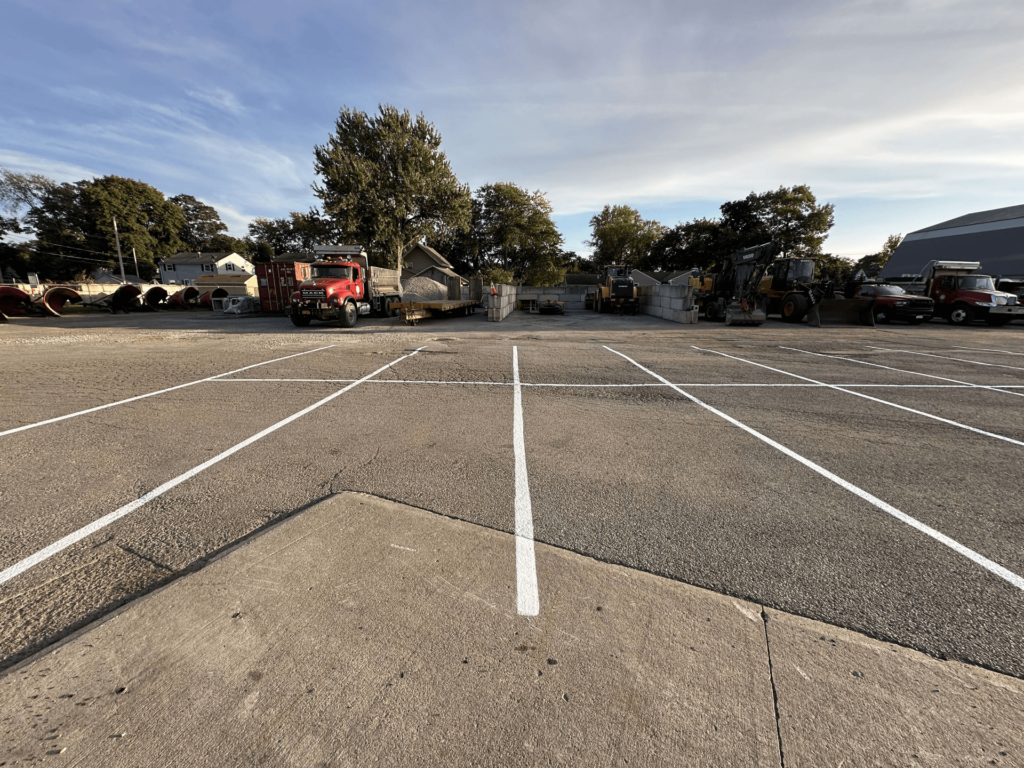Achieving optimal results in asphalt striping involves mastering the science of line thickness and spacing, fundamental aspects that significantly impact safety, efficiency, and aesthetics. The primary objective of asphalt striping is to delineate spaces clearly and effectively for both drivers and pedestrians, ensuring smooth traffic flow and maximum utilization of available space. Line thickness plays a crucial role in visibility and durability. Generally, asphalt striping stripes are around 4 to 6 inches wide, with variations depending on local regulations and specific needs. The thickness ensures that the lines are visible under various lighting conditions and withstand the wear and tear from vehicular traffic and weather elements. For optimal results, striping professionals use high-quality paints and equipment designed to achieve consistent line thickness throughout the asphalt striping . Spacing between asphalt striping stripes is equally critical. Proper spacing ensures that vehicles can maneuver safely within the designated spaces and that pedestrian walkways are clearly defined.

Additionally, clear and uniform spacing contributes to the overall organization and efficiency of asphalt striping s, reducing the risk of accidents and improving the overall user experience. Achieving precise line thickness and spacing requires adherence to industry standards and guidelines. Professionals often use measuring tapes, chalk lines, or laser-guided equipment to ensure accuracy during the striping process. Advanced techniques such as stencils and masking tape are employed for consistent line widths and sharp edges, further enhancing the clarity and professionalism of the finished product. The choice of materials also influences the effectiveness of asphalt striping . High-quality paints with reflective properties enhance visibility at night and in low-light conditions, contributing to safety and compliance with regulatory standards. Reflective beads or glass beads may be added to the paint to increase reflectivity, ensuring that lines remain visible to drivers even in adverse weather conditions.
Beyond functionality, the aesthetics of asphalt striping contribute to the overall impression of a property. Well-maintained and clearly marked asphalt striping project a sense of professionalism and attention to detail, which can positively influence customer perceptions and tenant satisfaction. Property managers and business owners often invest in regular striping maintenance to uphold these standards and enhance the curb appeal of their establishments. In conclusion, mastering the science of line thickness and spacing is essential for achieving optimal results in asphalt striping . By adhering to industry standards, using high-quality materials, and employing precise techniques, professionals ensure that asphalt striping are safe, efficient, and visually appealing. Clear and well-defined markings contribute to traffic safety, maximize parking capacity, and enhance the overall user experience. As such, effective asphalt striping is not just a matter of aesthetics but a critical component of property management and public safety. The standard spacing between parking stall lines is typically 18 to 24 inches, allowing enough room for car doors to open without encroaching on adjacent spaces.